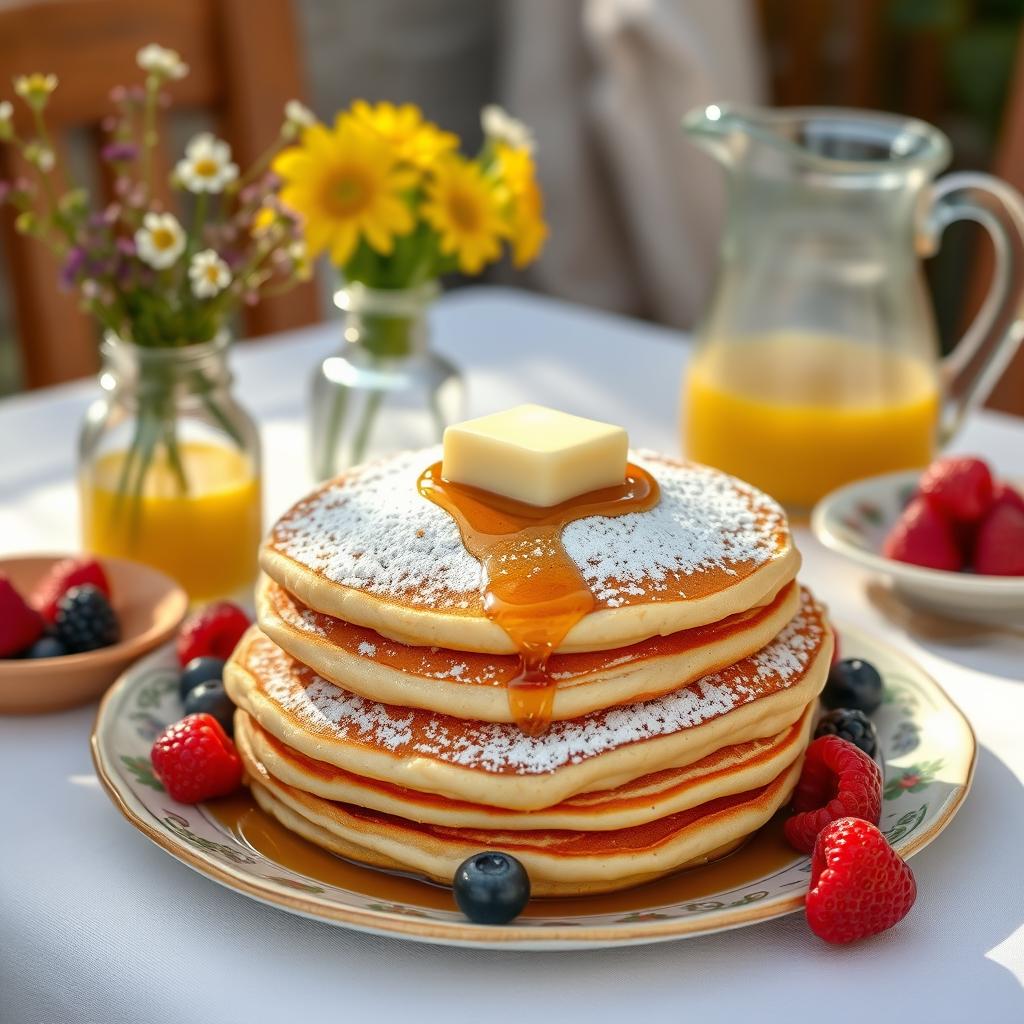
Saturday mornings always remind me of my grandmother’s kitchen. The smell of fluffy pancakes would fill the house. It drew everyone to the breakfast table. Making the perfect fluffy pancake is more than a recipe—it’s an art.
It turns a simple breakfast into a moment of comfort and joy. Whether you’re new to breakfast or love cooking on weekends, mastering fluffy pancakes will make your mornings special. This guide will show you how to make pancakes that are light, airy, and delicious.
Key Takeaways
- Learn the secrets to achieving perfectly fluffy pancakes every time
- Understand the science behind pancake texture and taste
- Discover professional techniques for pancake preparation
- Master temperature control for golden-brown perfection
- Explore versatile pancake variations and serving suggestions
Essential Ingredients for Perfect Pancakes
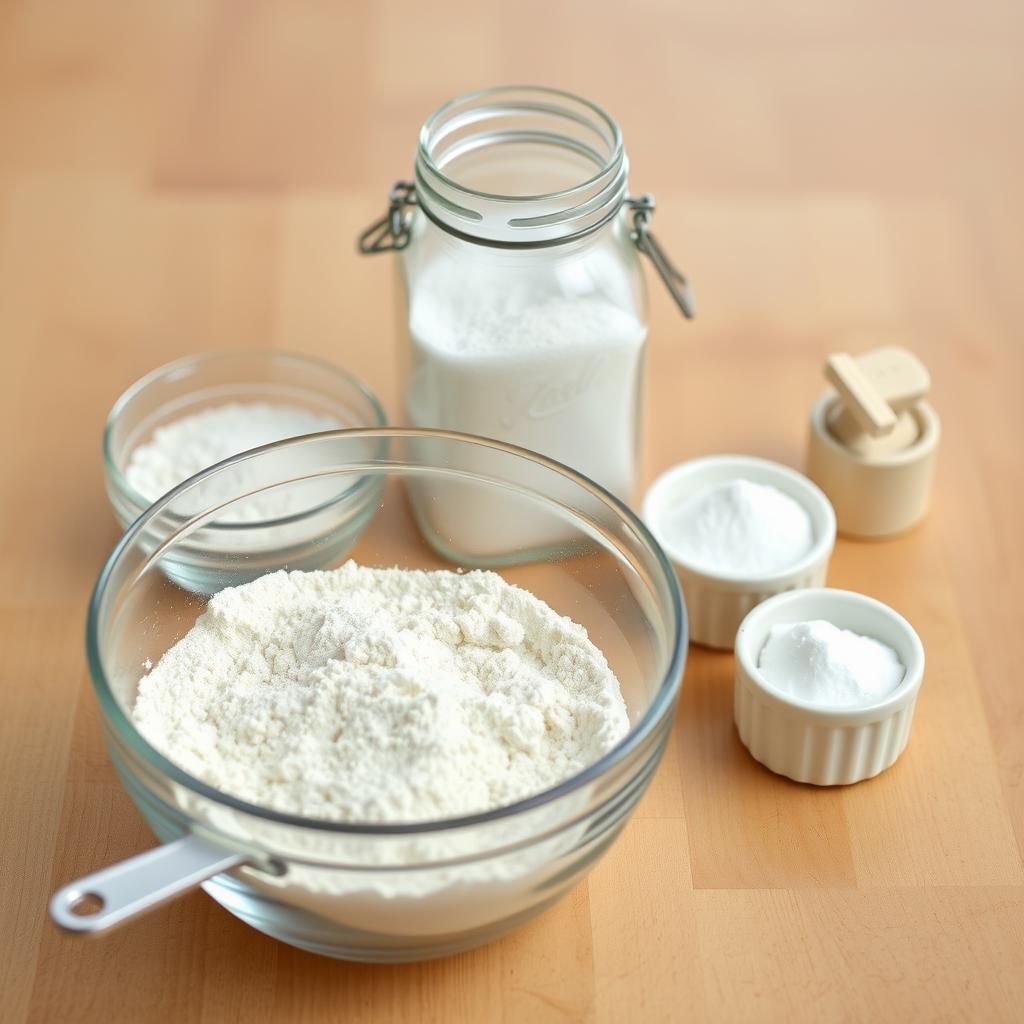
Making tasty buttermilk pancakes starts with the right ingredients. Your homemade mix needs special parts that work together. They make your pancakes fluffy and delicious.
Dry Ingredients: The Foundation of Flavor
Your pancake mix starts with quality dry ingredients. For the best homemade mix, you’ll need:
- 2 cups all-purpose flour
- ¼ cup granulated sugar
- 4 teaspoons baking powder
- ¼ teaspoon baking soda
- ½ teaspoon salt
Wet Ingredients: Creating Ultimate Fluffiness
Wet ingredients turn your dry mix into a light batter. For buttermilk pancakes, you’ll need:
- 1¾ cups milk or buttermilk
- ¼ cup melted butter
- 1 large egg
- 2 teaspoons vanilla extract
Temperature Matters: Ingredient Guidelines
Ingredient temperature is key for perfect pancakes. Room temperature ingredients blend better, making a consistent batter. Make sure eggs and milk aren’t cold.
Pro tip: Warm ingredients slightly for even fluffier pancakes in your homemade mix.
The Science Behind Fluffy Pancake Magic
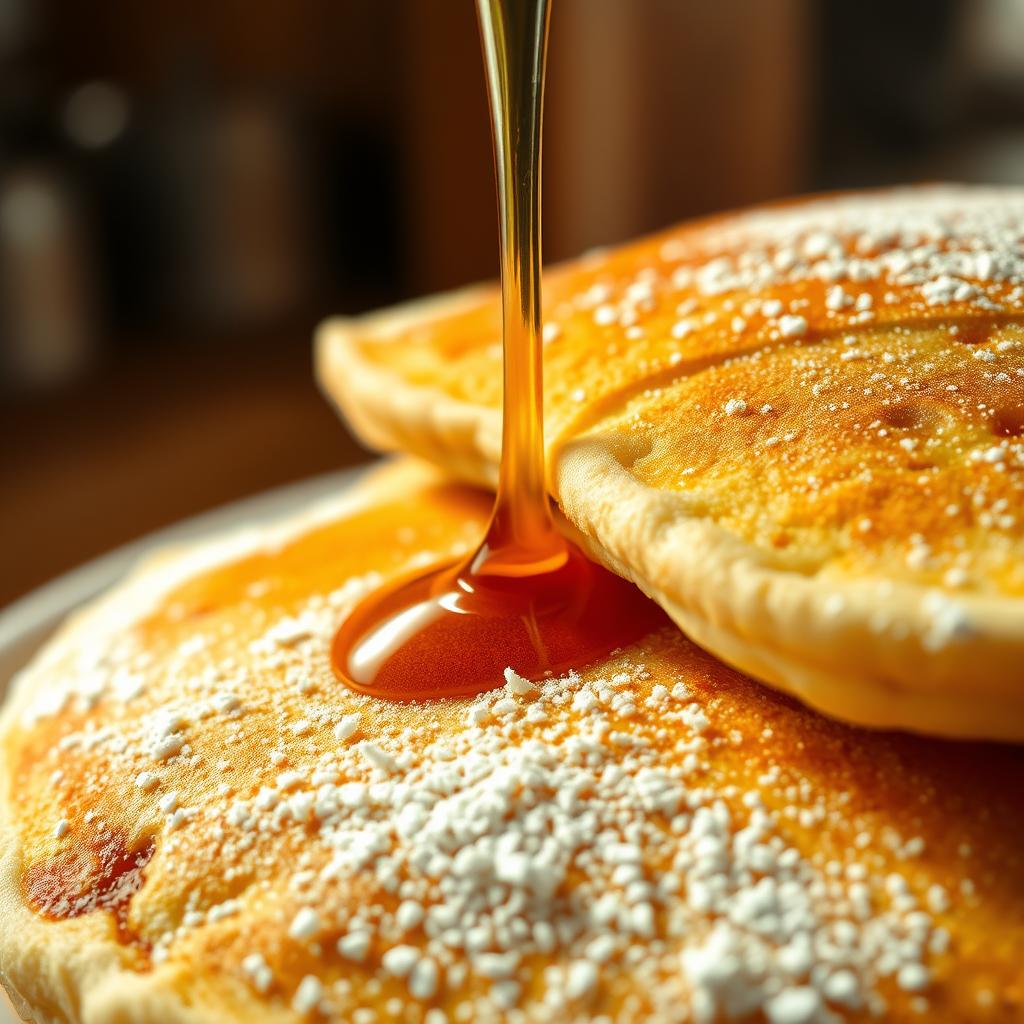
Unlocking pancake fluffiness secrets is like diving into a delicious chemical adventure. The magic happens when specific ingredients interact. This creates those light and airy pancakes you crave. Let’s explore the scientific principles that transform your batter into a cloud-like breakfast delight.
At the heart of pancake magic are two key players: baking powder and chemical reactions. Baking powder acts as a powerful leavening agent. It releases carbon dioxide gas that creates tiny bubbles in your batter. These bubbles are responsible for the signature fluffy texture that makes pancakes irresistible.
- Baking powder contains sodium bicarbonate and a weak acid
- Carbon dioxide bubbles form when wet and dry ingredients mix
- Cooking temperature around 375°F helps bubble formation
The protein interactions in flour play a crucial role in your pancake’s texture. Gluten formation determines whether your pancakes will be tender or tough. By carefully managing moisture and mixing techniques, you can control gluten development. This helps achieve that perfect light and airy consistency.
Egg whites are another secret weapon in creating fluffy pancakes. Whipping them until soft peaks form and gently folding them into the batter introduces additional air. This results in an even more delicate texture. The chemical dance between ingredients transforms simple components into a breakfast masterpiece.
Understanding these pancake fluffiness secrets empowers you to create restaurant-quality pancakes right in your own kitchen. With a bit of scientific knowledge and practice, you’ll be crafting light, airy pancakes. These will impress everyone at the breakfast table.
Step-by-Step Mixing Technique
Learning how to mix pancakes is key for a great weekend breakfast. The right way to mix can make your pancakes fluffy and tasty. It’s the start of a wonderful morning.
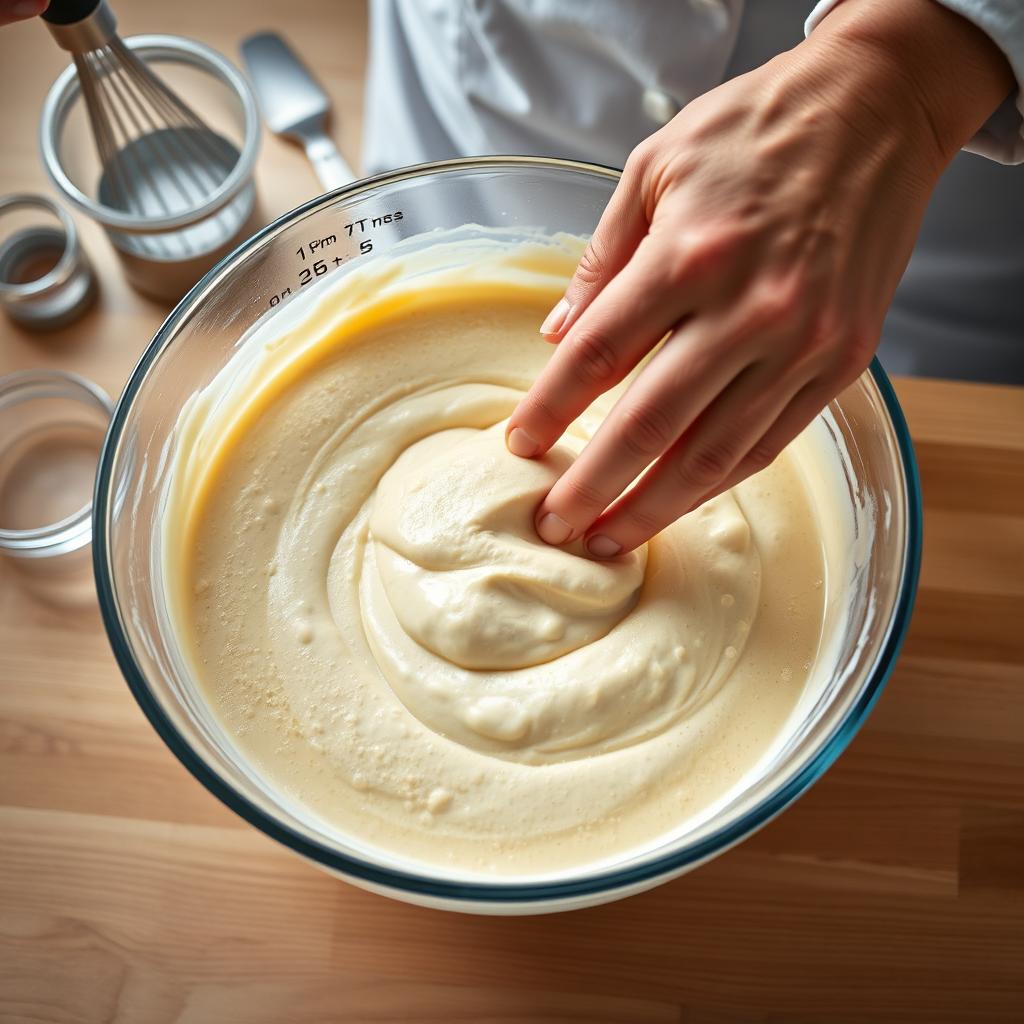
Proper Flour Measuring Method
Getting the flour right is the first step to perfect pancakes. Use the spoon and level method for accuracy:
- Gently fluff the flour with a spoon
- Spoon flour into the measuring cup
- Level off with a straight edge
- Avoid packing or shaking the cup
Combining Wet and Dry Ingredients
When mixing your batter, follow these steps:
- Create a well in the center of dry ingredients
- Pour wet ingredients into the well
- Use a whisk to mix gently
- Stop mixing when ingredients are just combined
Achieving the Perfect Batter Consistency
The perfect batter is slightly lumpy. It should:
- Run slowly off a spoon
- Have small flour lumps
- Not be too smooth
Pro tip: Let your batter rest for 20-30 minutes before cooking. This makes your pancakes tender and fluffy. They’ll impress your family at weekend breakfast.
Cooking Equipment and Temperature Control

Mastering pancake cooking starts with the right tools. A top-notch griddle or non-stick pan can make your brunch stand out. The Zojirushi Electric Griddle is a pro’s dream with its advanced features.
Here are key pieces you’ll need for pancake success:
- Look for a griddle with temperature control between 350°F to 375°F
- Go for non-stick surfaces for easy pancake flipping
- Choose a griddle big enough to cook several pancakes at once
Getting the temperature right is key for golden pancakes. Preheat your griddle for 5-15 minutes for even heat. The Zojirushi griddle heats from 176°F to 425°F, perfect for any pancake adventure.
For a quick brunch, use a griddle that fits six pancakes. A flexible spatula helps avoid pancake damage, making your breakfast look great.
- Preheat your griddle well
- Lightly grease the surface with butter
- Keep the heat steady at medium
Investing in quality gear and learning about temperature control will make your pancakes a hit at breakfast.
Expert Tips for Pancake Success
Mastering pancake cooking tips takes practice and precision. Professional chefs see making perfect fluffy pancakes as an art. It’s more than just mixing and flipping. Understanding the right techniques is key to turning simple breakfast into a culinary delight.
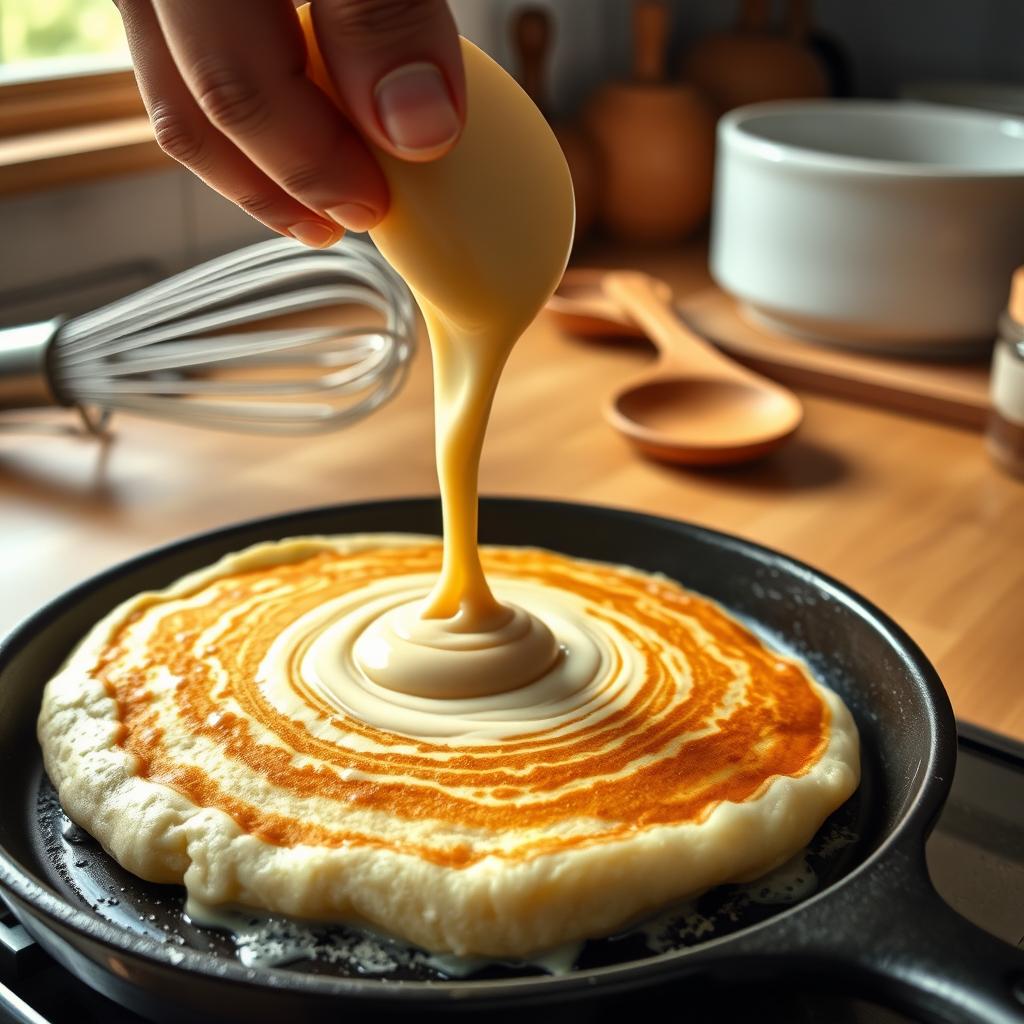
Common Mixing Mistakes to Avoid
Pancake batter needs gentle handling. Overmixing can ruin the fluffiness by creating too much gluten. Here are important tips for pancake success:
- Mix wet and dry ingredients just until combined
- Stop stirring when small lumps remain
- Let batter rest for 15-30 minutes before cooking
- Avoid aggressive whisking that breaks down air bubbles
Timing Your Flips Perfectly
Fluffy pancakes need precise cooking. Look for these signs before flipping:
- Bubbles form and start to pop on the surface
- Edges look slightly dry and set
- Cooking time is approximately 1-2 minutes per side
- Use medium heat around 350°F for consistent results
Golden Brown Color Guide
Getting the perfect golden-brown color is all about detail. Your pancakes should look warm and honey-like. Use a non-stick griddle or cast-iron skillet for even heat.
A light coating of cooking oil helps. It makes the outside crisp while keeping the inside fluffy.
Storage and Make-Ahead Options
Preparing breakfast can be tough on busy weekends. Learning to store and reheat pancakes makes mornings easier. You can enjoy homemade pancakes without spending hours in the kitchen.
Make-ahead pancake strategies are a big help for weekend breakfast lovers. Here are some top storage tips:
- Refrigerate pancake batter overnight for the best taste
- Freeze cooked pancakes for quick meals later
- Store pancakes to keep them fresh
Freezing pancakes needs a special method. Stack 2-3 pancakes together. Then, wrap them in plastic wrap and foil. This keeps them from getting freezer burn and keeps them soft. Your pancakes will stay good for up to 2 months.
Reheating pancakes is easy and fast. You have three main ways to do it:
- Microwave: 20-60 seconds, depending on how many you have
- Toaster: Great for one pancake at a time
- Oven: 350ºF for about 10 minutes
For a pro tip, let pancake batter rest for at least 30 minutes before cooking. This makes them fluffier and more moist.
Conclusion
Your search for the perfect fluffy pancake is over. You now know the secret to making them. It’s all about mixing gently, using the right ingredients, and cooking carefully to keep those air bubbles.
Adding toppings can make your breakfast even better. Try maple syrup, fresh berries, or caramelized apples. You can also mix in chocolate chips, blueberries, or whipped cream for a special treat.
Remember, making pancakes is a skill that gets better with time. Even if your first tries don’t turn out right, keep trying. You’ll get better, and your pancakes will be golden, light, and delicious.
These tips are great whether you’re making pancakes for a big family or just for yourself. Enjoy the process and let your creativity show in every pancake you make.
FAQ
What’s the secret to making pancakes extra fluffy?
To make pancakes fluffy, use baking powder and baking soda. Don’t overmix the batter. Mix wet and dry ingredients separately and gently combine them.
Is buttermilk really necessary for making great pancakes?
Buttermilk makes pancakes better, but it’s not required. It adds acidity that makes the baking soda work better. If you don’t have buttermilk, mix vinegar or lemon juice with regular milk.
How do I know when to flip my pancakes?
Look for bubbles on the surface and edges drying out. This usually takes 2-3 minutes on medium heat. Flip when you see these signs, and cook the other side for 1-2 minutes until golden.
Can I make pancake batter ahead of time?
Yes, you can make batter ahead of time. Store it in an airtight container in the fridge for up to 24 hours. Stir gently before cooking, as it may separate.
What’s the best way to reheat leftover pancakes?
Reheat pancakes in a toaster or toaster oven for crispy edges. If using a microwave, cover with a damp paper towel to prevent drying. Toasting helps restore texture lost in the microwave.
How can I make my pancakes more nutritious?
Use whole wheat flour, add Greek yogurt, or mix in ground flaxseed or chia seeds. Top with fresh fruits, nuts, or Greek yogurt for extra nutrition. Try almond or oat flour for more nutrition.
Why do my pancakes sometimes turn out tough?
Tough pancakes come from overmixing. This develops gluten, making pancakes dense. Mix wet and dry ingredients just until combined, leaving a few lumps for a lighter texture.
What’s the ideal pan temperature for pancakes?
Aim for medium heat at 375°F (190°C). Too hot and the outside burns before the inside cooks. Too cool and pancakes are dense. Test with water droplets – if they sizzle, your pan is ready.
